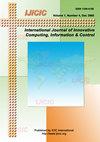利用机器学习技术进行生产环境故障预测的系统文献综述
IF 1.1
Q4 COMPUTER SCIENCE, ARTIFICIAL INTELLIGENCE
International Journal of Innovative Computing Information and Control
Pub Date : 2022-02-21
DOI:10.11113/ijic.v12n1.348
引用次数: 1
摘要
背景:过程连续性是生产环境的基本质量属性之一。对工艺故障的准确预测是生产交付过程有效管理的一个重大挑战。目的:本文的主要目的是对使用机器学习技术预测生产环境故障的研究进行系统回顾。本综述确定并调查了几个研究问题,目的是提供全面的总结、分析和讨论有关故障预测测量、数据集、度量、评估措施、单个模型以及集成模型的各种观点。方法:本研究采用通常的系统文献综述方法,并仅限于2016年1月至2021年5月期间使用最广泛的计算机科学数字数据库图书馆。结果:我们分析了发表在同行评议期刊和会议论文集上的40项相关研究。研究结果表明,与其他服务质量属性相比,在使用故障预测的生产环境区域中只有少量活动。在选定的初步研究中,SVM、RF、DT、LR和LSTM是最常用的ML技术,其中最准确的是使用ANN的预测模型。大多数研究集中在回归问题上,并使用监督式机器学习。在大多数调查中使用了个体和集合预测模型,使用每种类型的研究数量几乎相等。结论:综合文献分析发现,集成模型在预测精度方面优于单个模型,是预测故障或意外事件的有效模型。然而,它们的使用相当罕见,迫切需要将这些模型和其他模型用于现实世界中具有不同数据集的大量数据集,以提高结果的准确性和一致性。本文章由计算机程序翻译,如有差异,请以英文原文为准。
A Systematic Literature Review of Failure Prediction in Production Environment Using Machine Learning Technique
Context: Process continuity is one of the fundamental quality attributes of a production environment. The accurate prediction of a process failure is a significant challenge for the effective management of the production delivery process.
Objective: The primary aim of this paper is to present a systematic review of studies related to the prediction of failure of production environment using machine learning techniques. Several research questions are identified and investigated in this review, with the goal of providing a comprehensive summary, analyses, and discuss variously viewpoints concerning failure prediction measurements, datasets, metrics, measures of evaluation, individual models and also with the ensemble models.
Method: The study employs the usual systematic literature review methodology and is limited to the most widely used digital database libraries for computer science from January 2016 to May 2021.
Results: We examine 40 relevant research published in peer-reviewed journals and conference proceedings. The findings indicate that there is just a small amount of activity in the region of the production environment using failure prediction compared with other service quality attributes. SVM, RF, DT, LR, and LSTM were the most commonly used ML techniques employed in the selected primary studies, and the most accurate is the prediction model using ANN. The majority of studies concentrated on regression problems and used supervised kinds of machine learning. Individual and ensemble prediction models were used in the majority of investigations, with the number of studies using each type being nearly equal.
Conclusion: According to the findings of this comprehensive literature analysis, ensemble models outperformed individual models in terms of accuracy prediction and have been found to be helpful models for predicting the fault or unexpected events. However, their use is rather infrequent, and there is a pressing need to put these and other models to use in the real world to a large number of datasets with a diverse collection of datasets in order to improve the accuracy and consistency of the findings.
求助全文
通过发布文献求助,成功后即可免费获取论文全文。
去求助
来源期刊
CiteScore
3.20
自引率
20.00%
发文量
0
审稿时长
4.3 months
期刊介绍:
The primary aim of the International Journal of Innovative Computing, Information and Control (IJICIC) is to publish high-quality papers of new developments and trends, novel techniques and approaches, innovative methodologies and technologies on the theory and applications of intelligent systems, information and control. The IJICIC is a peer-reviewed English language journal and is published bimonthly

 求助内容:
求助内容: 应助结果提醒方式:
应助结果提醒方式:


